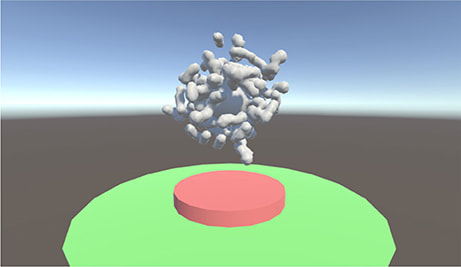Examining 3D Scientific Data
Physical walking is consistently considered a natural and intuitive way to acquire viewpoints in a virtual environment. However, research findings also show that walking requires cognitive resources. To understand how this tradeoff we studied participants counting features in a complex 3D structure while walking or while using a 3D interaction technique for manipulation.
We selected a visualization task that required participants to analyze complex tridimensional models. We were inspired by scientists and practitioners that study 3D datasets derived from Computed Tomography (CT) or Magnetic Resonance Imaging (MRI) of biological structures. The models consisted of a central spherical shape surrounded by tubular branches; a structure similar to one commonly found in the respiratory system of beetles.
The models appeared in the center of the red area. In the Walking condition, participants could move freely inside the green area. The dataset would disappear if users moved outside this area. In the grab condition, participants stayed still and used the controller to grab and rotate the model.
The models appeared in the center of the red area. In the Walking condition, participants could move freely inside the green area. The dataset would disappear if users moved outside this area. In the grab condition, participants stayed still and used the controller to grab and rotate the model.
|
Lages, W. S., & Bowman, D. A. (2018). Move the object or move myself? walking vs. manipulation for the examination of 3D scientific data. https://doi.org/10.3389/fict.2018.00015
|
Team: Wallace Lages and Doug Bowman



